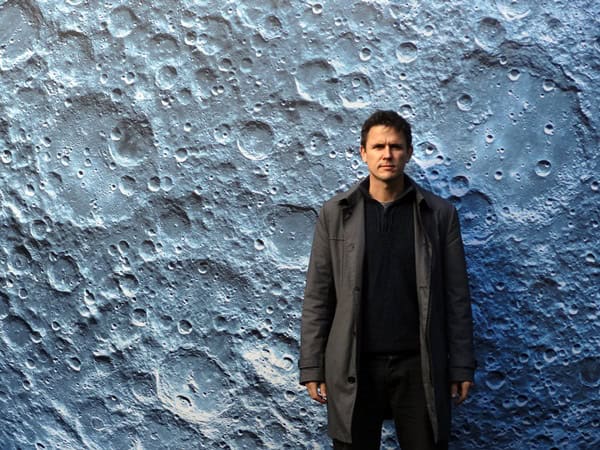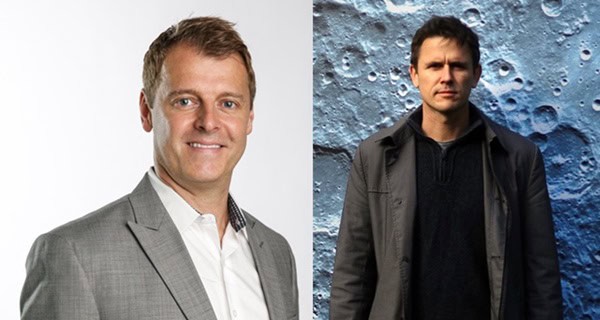The Earth Alive exhibition is a collaboration with world-class scientists from the Earth Observatory of Singapore and Science Centre Singapore, and showcases the magnificent Earth in life-size interactive displays, for larger than life lessons on our living world. On top of learning how the natural phenomena impact our world, guests will also explore the impact that human beings have on our planet, such as with climate change, in the aptly titled Human Sphere.

Image Credit : Prof. Benjamin Horton
Our team speaks to Prof. Benjamin Horton, Director of the Earth Observatory of Singapore where he shares more about the new Earth Alive Exhibition, our role in combating climate change and more.
Exclusive Interview with Prof. Benjamin Horton, Director of the Earth Observatory of Singapore
1. Can you share more about the latest Earth Alive exhibition, including the key issues being addressed in the exhibition?
Prof. Benjamin: Launched in partnership with the Earth Observatory of Singapore (EOS) in the Nanyang Technological University, Earth Alive is the Science Centre Singapore’s (SCS) newest permanent exhibition. Earth Alive showcases our magnificent planet in a series of interactive exhibits, allowing visitors to experience Earth’s natural processes.
More than 20 interactive exhibits bring to life the processes that drive geohazards such as earthquakes and volcanic eruptions. Earth Alive showcases the pressing issue of climate change, perhaps the greatest environmental challenge of the 21st century.
From the 5-metre inflatable globe of the Earth to the interactive Augmented Reality (AR) Sandbox, the compelling exhibits seek to engage and educate guests of all ages about the wonders of the Earth.
Earth Alive highlights some of the impacts that geohazards and climate change have on our planet, drawing case studies and stories from Southeast Asia.
2. How has the Earth Observatory of Singapore collaborated with Science Centre Singapore to bring this to life?
Prof. Benjamin: A team of world-class scientists at the EOS worked very closely with the SCS team to bring the series of interactive exhibits to life. The EOS scientists acted as scientific directors and content advisors.
The EOS conducts fundamental research on earthquakes, volcanic eruptions, tsunamis and climate change in and around Southeast Asia, toward safer and more sustainable societies. SCS used their experience to explain complex problems to a Singaporean audience and managed the building of the exhibits, with the EOS staff and scientists acting as scientific directors and content advisors.
Through a thorough review and concept strategy, SCS and the EOS worked with vendors to create an exhibition that can be enjoyed by visiting young learners, parents, and guardians, taking them beyond textbooks and social media to engage them in topics like Earth’s processes, the geohazards that affect our communities, how our planet is responding to climate impact, and the steps we can take to protect it.
3. Why is it important for families and young learners in Singapore to understand natural phenomena like earthquakes, tsunamis and volcanic eruptions?
Prof. Benjamin: While Singapore is privileged to have been relatively sheltered from natural disasters, we are located at the centre of the Southeast Asian Ring of Fire, one of the most disaster-prone regions on Earth. While these geohazards do not have a direct impact on Singapore, it could affect our economy, trade, and food security.
Singapore is also starting to feel the impact of climate change. As parents or guardians, we recognise that making the time for change can be difficult. But changes can begin with small steps, like educating yourself on the evidence, causes, and effects of climate change. Children are inherently curious and want to learn. We need to understand how natural phenomena works and if we are armed with this information, we can be more sustainable, stop climate change, better cope with living on this changing planet, and have a happy future. The key focus of the Earth Alive exhibition is to enable education.
We only have one planet, therefore we all have a part to play to look after it.
4. What role can we play as an individual or a family to combat climate change in our own ways?
Prof. Benjamin: Some claim individual actions won’t make a difference or that domestic changes do not matter if others are not following suit. Individual and family actions lead to changes in collective behavior. There is reason for hope. Family-based changes can shape the environmental landscape for future generations. We already have much of the technology and know-how required to transition towards a more sustainable society. We just need to get started. And it can start at the individual level and with our families.
We can take many actions to combat climate change. The Earth Alive exhibition is designed to guide discussions of climate action in your household. What are you eating? What transportation do you use? How does your home contribute to climate change? What do you throw out? There are so many other actions that we can take, and this is discussed at the Earth Alive exhibition. I encourage you to visit the exhibition and explore ways to address the challenge of climate change.
5. Lastly, what’s your next plan/project for Earth Observatory of Singapore?
Prof. Benjamin: By the end of the 21st century, up to 1 billion people worldwide will live in low-elevation coastal areas vulnerable to sea-level rise brought about by climate change, storms or earthquakes.
Researchers at the EOS are studying climate change and working to alleviate our impact on the environment. Climate research at the EOS fills a vital gap in providing much needed climate data in Southeast Asia. By studying sea-level change of the past and present, and across the region, EOS’ scientists can develop projections of the regional impact of rising seas.
Researchers at the EOS are understanding how the Earth system interacts and connects—from the convective and tectonic processes that build mountains and volcanoes, from the core to the atmosphere, and from the time of Earth’s formation to the present day. While understanding Earth’s interconnected processes is of inherent scientific value, these efforts are made urgent by the need to understand how the Earth can continue to sustain civilization and the planet’s biodiversity.
Thank you Prof. Benjamin Horton for taking our interview!

Image Credit : Luke Jerram
At the heart of the Earth Alive Exhibition is GAIA, a 5-metre inflatable globe installation by British artist and sculptor, Luke Jerram. The installation will reflect high-definition imagery of the Earth’s surface from the National Aeronautics and Space Administration (NASA). Our team speaks to Luke Jerram where he shares more about the inspiration behind the creation of GAIA and more.
Exclusive Interview with Luke Jerram, British Installation Artist
1. Can you share more about your inspiration for GAIA, the key installation of the Earth Alive exhibition?
Luke Jerram: My inspiration for GAIA was from my fascination of the “overview” effect. This is the experience that astronauts first get when they look at earth from space for the very first time. There is a sense of awe and wonder that they gaze upon the beauty and fragility of the earth. This is the experience I wanted to impart to the public.
Taken from Luke’s video from HOTA, Home of the Arts: https://www.youtube.com/watch?v=iX_h4Y20BGs
2. What is a key takeaway that you hope guests, including families and young learners, will walk away with from your creation of GAIA?
Luke Jerram: That the Earth is a beautiful but fragile place. All the nations and all the people of the world need to work together to make the necessary changes to society, to save the planet from any further destruction.
3. How did you create GAIA?
Luke Jerram: It was made from high resolution NASA imagery and fabricated in Bristol, UK where I live, working in collaboration with a large hot air balloon company.
4. How can parents use the Arts to continue to encourage discussions and actions around science and climate change at home?
Luke Jerram: Through as much exposure and encouragement possible. Art can play a very integral role as a tool in communicating science to the people. For example, parents could visit the Science Centre Singapore with their children and be exposed to immersive, interactive installations that convey concepts of science and climate change. Be open to the questions that your kids are asking, and find out the answers together. That’s the best way to encourage learning at home.
5. Lastly, what is a word of advice that you would like to share with our young, budding artists in Singapore?
Luke Jerram: Be curious about everything in the world around you. Artwork can be inspired by everything, from a story you overhear on the train, to the steam rising off a cup of tea.
I also believe it can be the artwork that doesn’t look like ‘art’, which can be the most interesting and cutting edge.
Thank you Luke Jerram for taking our interview!
Visit The Earth Alive Exhibition at Science Centre Singapore where the whole family can have a fun and educational time together! To find out more, please visit https://www.science.edu.sg/whats-on/exhibitions/earth-alive




